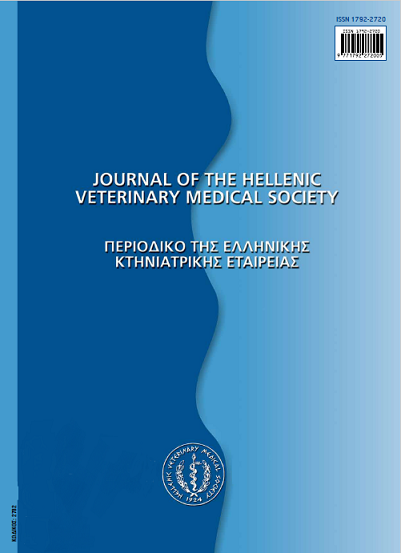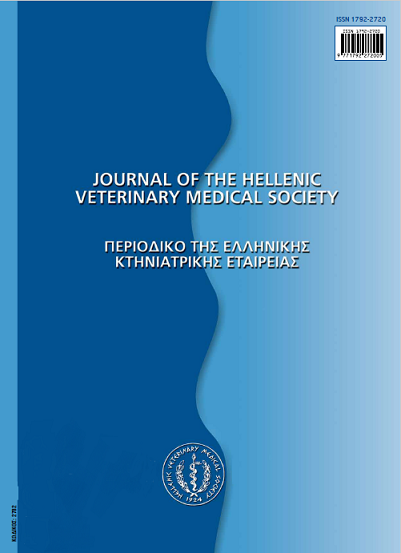Variations in the radiographic appearance of a nasal adenocarcinoma over time
Abstract
A 9 year old, neutered male, mixed breed dog had epistaxis from the right nostril, right epiphora and marked upper respiratory noise. Initial radiographs revealed lesions typical of primary nasal neoplasia, but the biopsy was non-diagnostic. Subsequent radiographs, obtained one and two months later when the dog did not show any clinical signs, revealed radiographic signs typical of destructive rhinitis. Clinical signs recurred three months later and radiographic signs were again typical of advanced primary nasal neoplasia. Nasal adenocarcinoma was confirmed histopathologically. The principal reason for this unusual sequence of the radiographic findings is considered to be the temporary disappearance of a nasal mass, possibly because it became dislodged and was swallowed.
Article Details
- Come citare
-
LAMB, C. R., GREGORY, S. P., BROCKMAN, D., MANTIS (Π.Σ. ΜΑΝΤΗΣ) P. S., & DOBSON, J. (2018). Variations in the radiographic appearance of a nasal adenocarcinoma over time. Journal of the Hellenic Veterinary Medical Society, 54(2), 140–145. https://doi.org/10.12681/jhvms.15249
- Fascicolo
- V. 54 N. 2 (2003)
- Sezione
- Case Report
Authors who publish with this journal agree to the following terms:
· Authors retain copyright and grant the journal right of first publication with the work simultaneously licensed under a Creative Commons Attribution Non-Commercial License that allows others to share the work with an acknowledgement of the work's authorship and initial publication in this journal.
· Authors are able to enter into separate, additional contractual arrangements for the non-exclusive distribution of the journal's published version of the work (e.g. post it to an institutional repository or publish it in a book), with an acknowledgement of its initial publication in this journal.
· Authors are permitted and encouraged to post their work online (preferably in institutional repositories or on their website) prior to and during the submission process, as it can lead to productive exchanges, as well as earlier and greater citation of published work.




